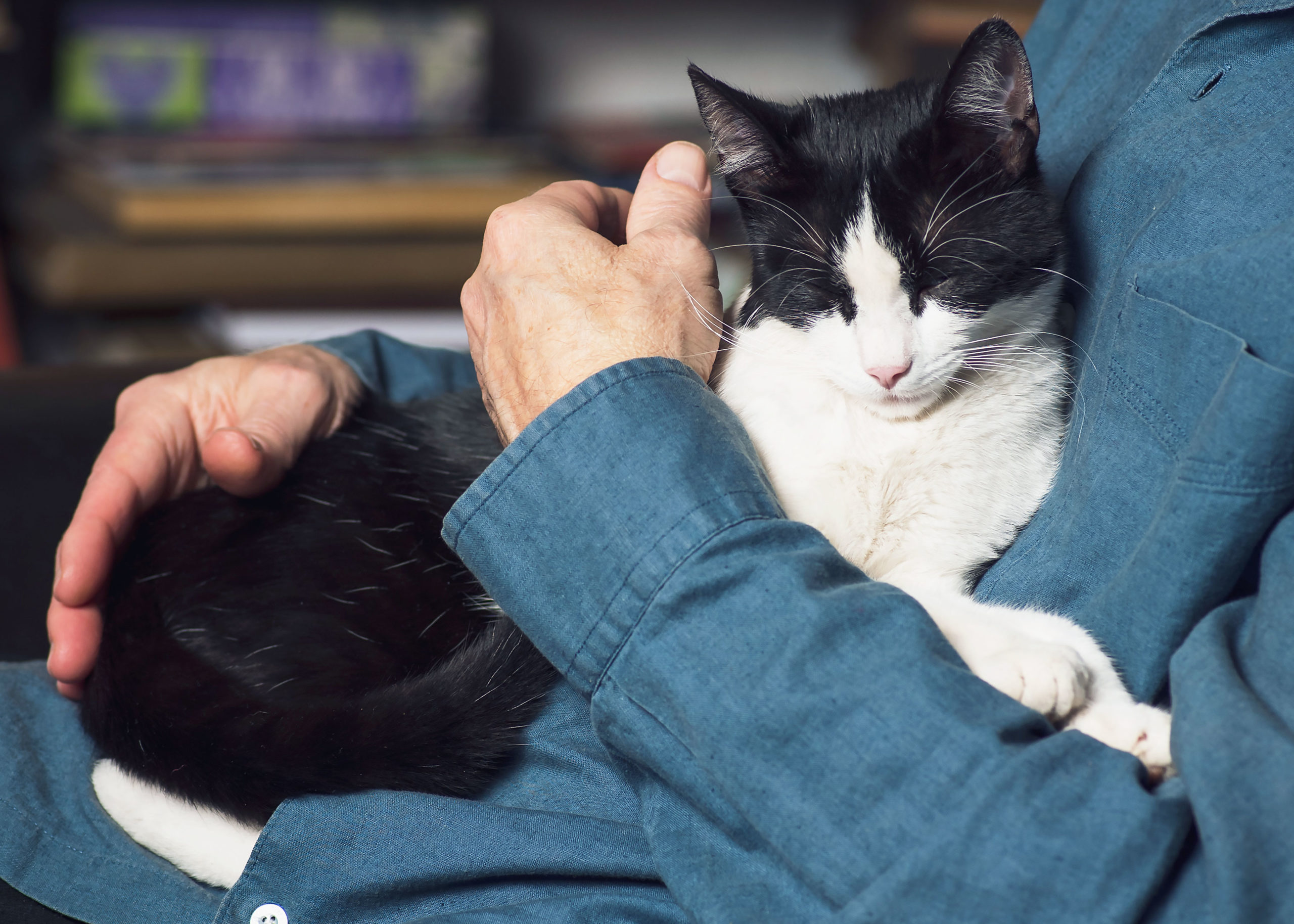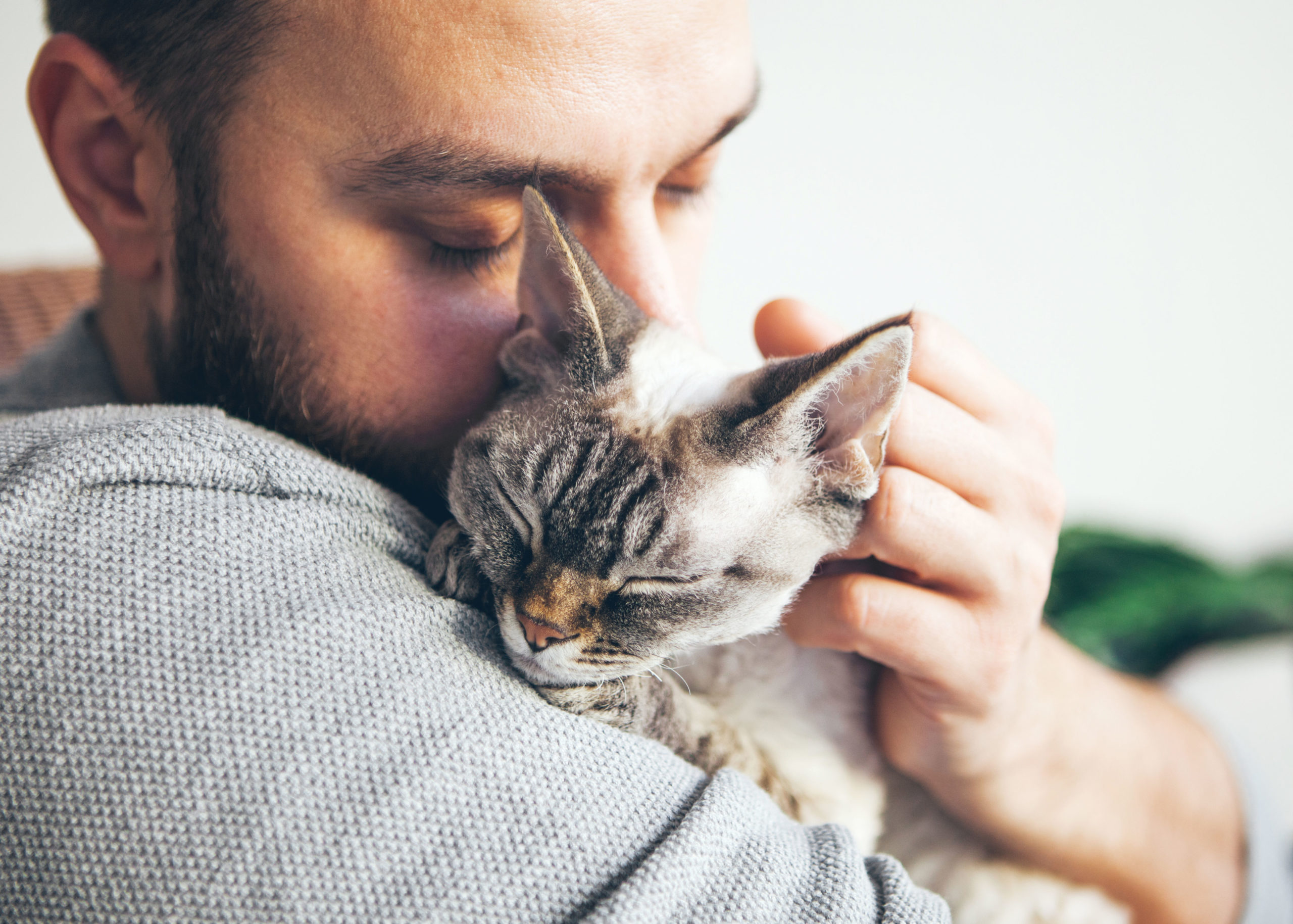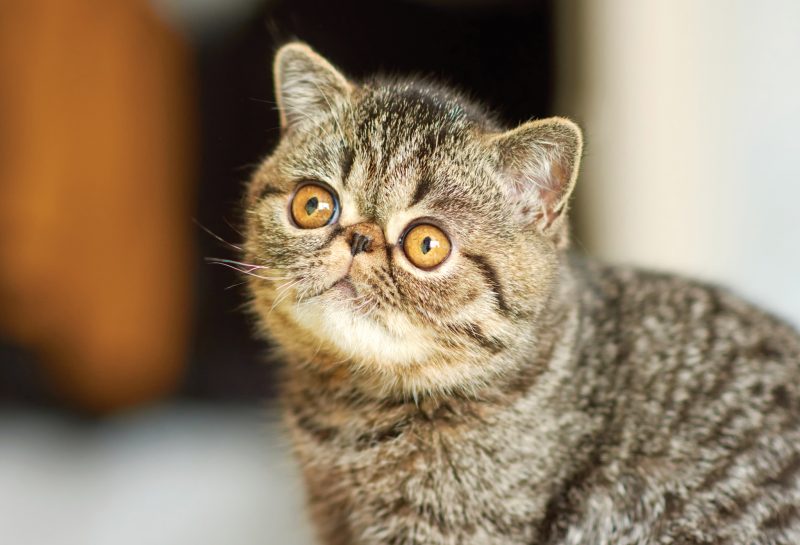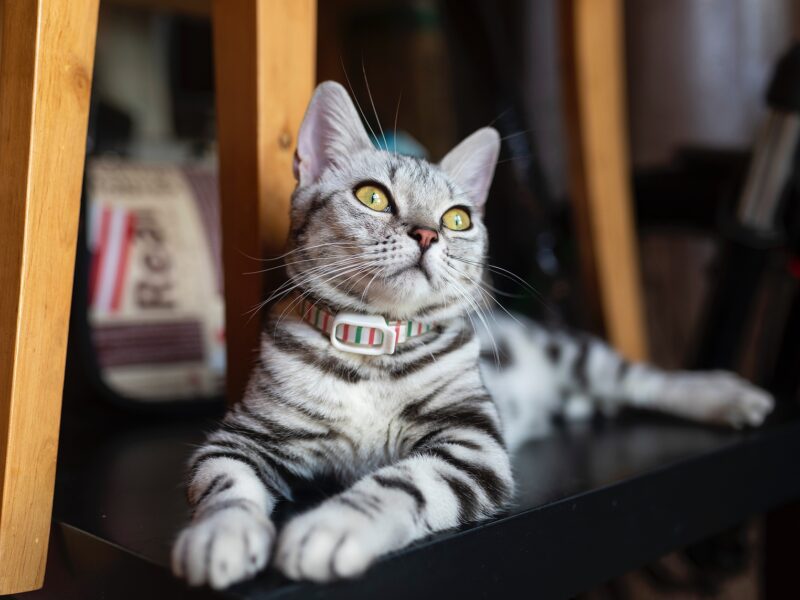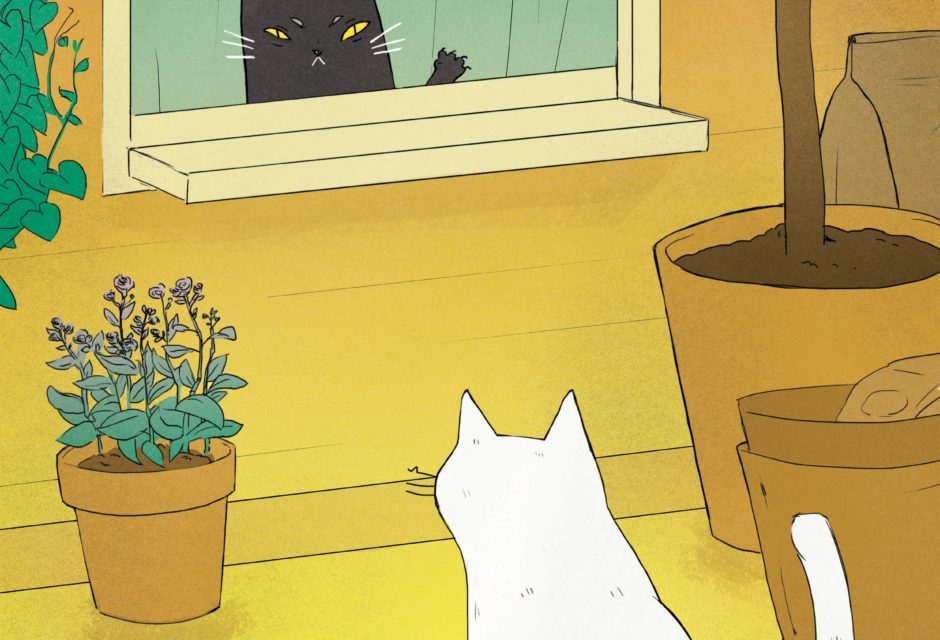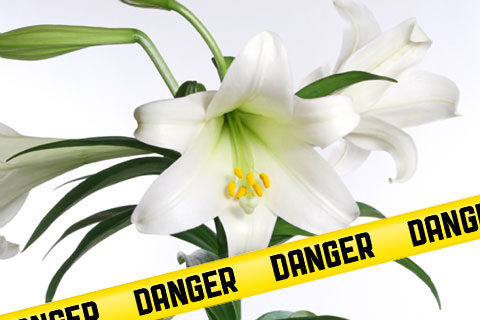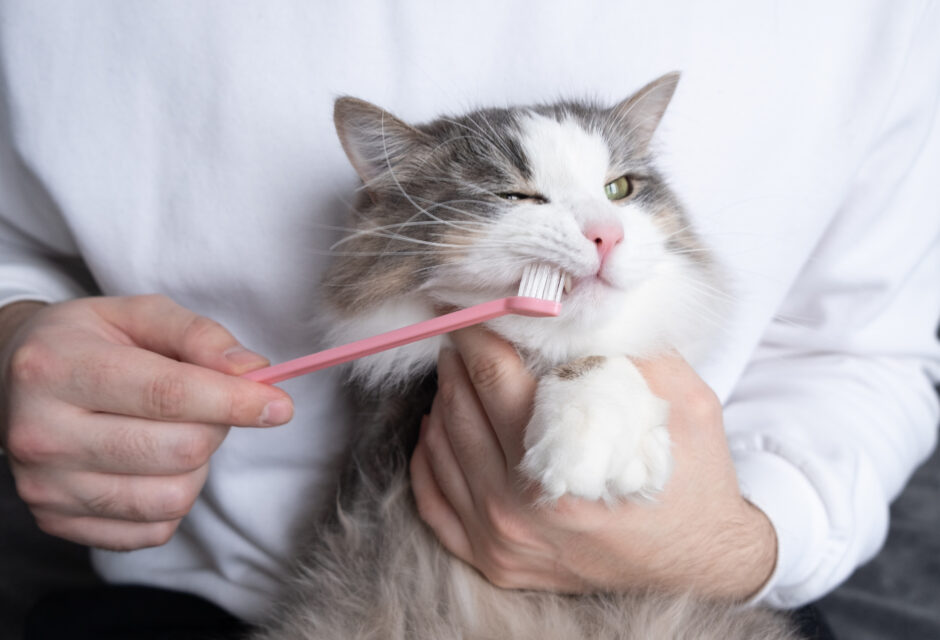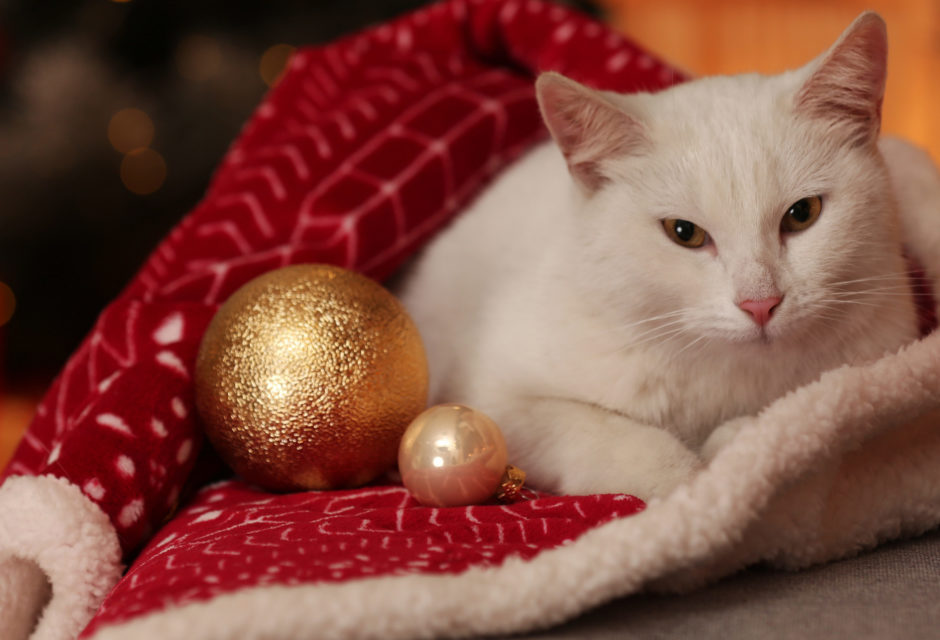
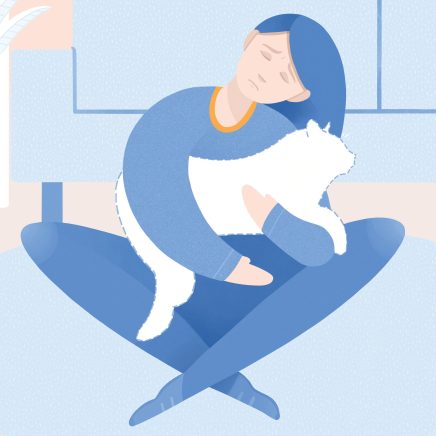
Final Moments, Spent At Home
A Kinder Goodbye: The Rise of At-Home Euthanizations
It’s heartbreaking to say goodbye. At-home euthanasia makes it easier. A growing trend, at-home euthanasias are a blessing for pets and the people who love them.
Karen Duncan has been in the room for the last minutes of the lives of many, many animals.
As the co-founder of Vancouver Orphan Kitten Rescue (VOKRA) in Vancouver, Canada, which can take in up to 1,800 felines each year, the animal lover has been present for hundreds of euthanizations of cats and kittens since the non-profit started in 2000.
“It’s very hard. The kittens are the hardest. They’re the sweetest little things,” she says.
Between her own pets and being with foster parents and adopters when they say their final goodbyes, Karen believes that at-home euthanization, where a veterinarian comes into the home for the procedure, is a much easier experience for both the person and pet.
“The animal feels like they’re safe lying in your arms instead of on a table in a vet’s office,” she says. “You don’t want them having stress in their last minutes.”
Growing Trend
The idea of at-home euthanizations is far from a new idea in the world of veterinary medicine. In fact, house calls used to be the norm and the practice has been around for hundreds of years. Think, James Herriot, the veterinary surgeon making his country rounds treating not only large farm animals, but cats and kittens too.
But the practice fell out of practice, so to speak, as vets started clinics in standalone buildings, and multiple veterinarians joined hospitals where equipment and resources could be consolidated to be more efficient and cost effective.
But now mobile operations are coming back into focus, not just for the sake of customer convenience, but also as a more holistic measure of treatment—especially when it comes to palliative and end-of-life care.
That is especially true for older and sick animals, when the goal shifts from curing what ails them to providing comfort and compassion, according to the International Association for Animal Hospice and Palliative Care, an organization that creates guidelines for compassionate approaches or philosophy of end of life care.
Diseases or conditions that would most frequently warrant the end-of-life approach include cancer, organ failure, severe osteoarthritis, cognitive dysfunction, or dementia or senior pets approaching the end of life. It also includes “failure to thrive,” which is described as any life-limiting condition that is contributing to an excessive burden of caregiving for a family, or treatments/interventions that are unacceptable to the pet.
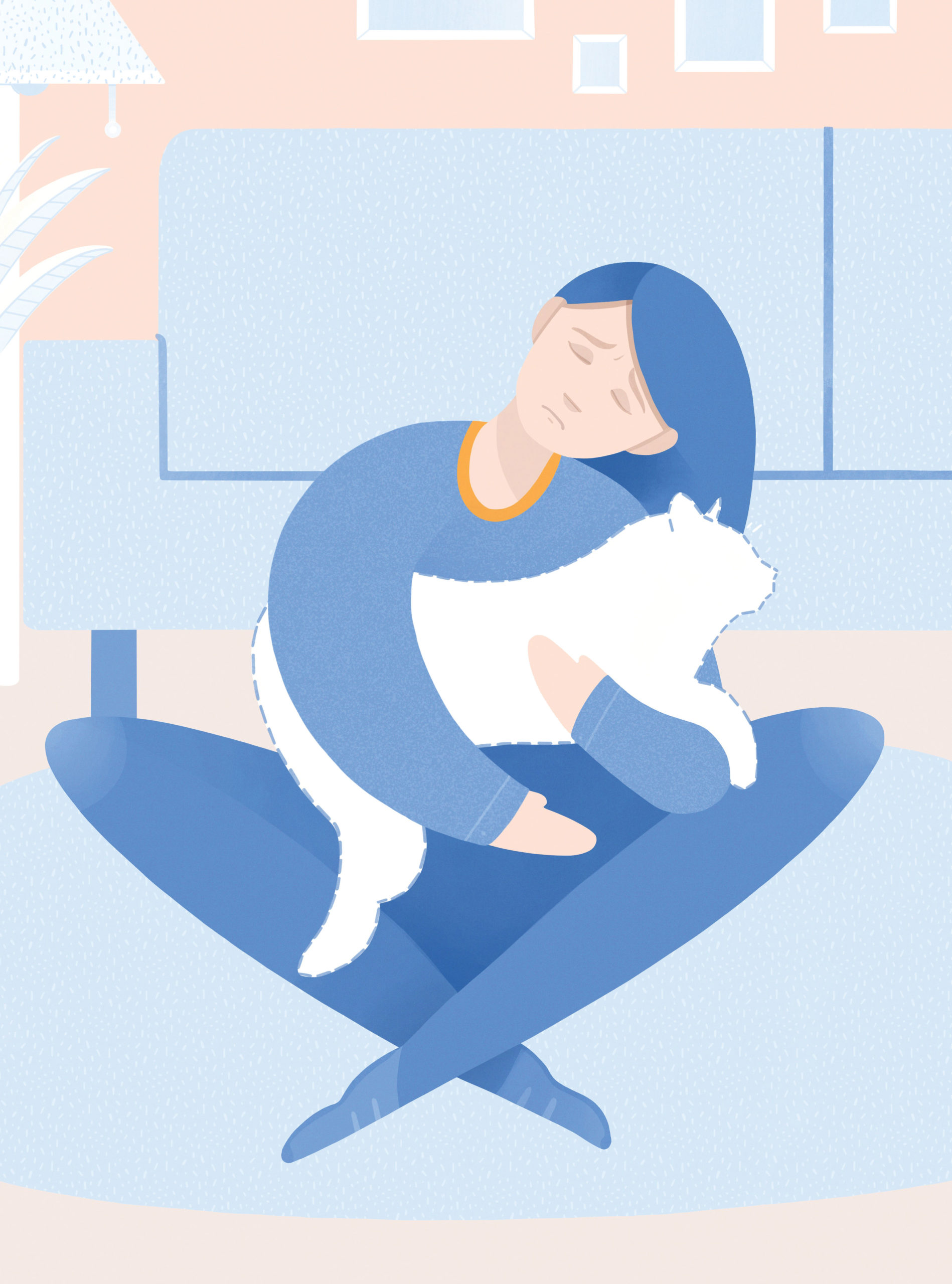
A Kinder Goodbye
Dr. Jeff Berkshire started doing at-home euthanizations for a handful of clients about six years ago. Now he can’t keep up with the demand.
“The response from pet families has been the most rewarding of my career. It means so much,” Dr. Berkshire, based in Vancouver, Canada, tells Modern Cat.
Between travel time, the procedure, and acting as a de-facto counsellor to his clients, the at-home service takes a lot more time than it would in a clinic, at least an hour.
And that doesn’t factor in the time the longtime vet spends with clients leading up to the procedure, between reviewing the animal’s current condition, health concerns, and discussing palliative care options and prognosis, as well as quality of life concerns and end of life decision making considerations. It’s the kind of quality of end-of-life care that often isn’t possible in a busy, clinical setting.
“Hospitals do their best but there are so many people and animals coming and going,” he says.
But Dr. Berkshire maintains the time and emotional investment of being face-to-face in the animal’s home is worth it, both for him and the pets and their owners.
“They thank you for taking time with me, for making things peaceful for me and my pet. And although they had fears it was much easier than they anticipated it being,” he says.
After decades of working in emergency medicine, Dr. Laura Chenault created a mobile practice so she could provide end-of-life care for pets in the comfort of their owner’s homes instead of a clinical setting. Stepping Stone Veterinary Care, in San Antonio, Texas, is centred around compassionate in-home euthanizations and hospice care, and is an extension of what Chenault felt was lacking in modern vet care: Space and breathing room to help navigate pet parents through difficult end-of-life decisions for their loved ones.
She wants people to know that euthanization “doesn’t have to be this scary, clinical experience.”
“You don’t want their last experience to be one of fear going into a clinic and trying to get them onto a table,” she says.
During her home visits, she sees pet parents much more willing to display their emotions in the comfort of their own home. And that’s a good thing.
“Sometimes they will apologize for crying but I tell them not to. This is your baby. It’s good to cry,” she says.
The ability to be open with emotions is another advantage of the service. People can be more open, and loved ones can be present for the final moments as well. The whole family, children too—Dr. Chenault sees it as a much more natural way to express grief.
What Vets Want You to Know About At-Home Euthanasia
Dr. Laura Chenault has performed approximately 800 at-home pet euthanizations. Here’s what she would like pet owners to know about having a vet come into your home for your pet’s final moments.
1.Do Not: Clean your house
Dr. Chenault says many clients feel they need to clean before she comes over, but the last thing a vet cares about is whether the house is tidy. She is there as a collaborator, a helper, an assistant—not a guest. “I don’t care if their house is clean,” she says.
2. Do: Have special treats
Does your cat love tuna? Cheese? Now is the time for special treats, or a final meal that they love. The only physical discomfort the animal will feel in the entire process is the sedative shot administered under the skin, and Dr. Chenault says many pets can be distracted through food so they don’t even notice it.
3. Do: Use familiar and comfortable items
Does your cat have a special blanket or bed they like to lie on? A stuffed animal they like snuggling with? This is a logical spot for the process where they will be the most comfortable.
4. Do: Have a support system
Having family members, or other friends who loved the pet in the home, can make the process easier. Dr. Chenault says sometimes whole families will be present, including kids, who get to express their grief in a more natural and healthy way.
5. Do: Show emotion
One of the biggest advantages of being in your own home is that pet parents can be more open with their emotions. Dr. Chenault wants people to know: It’s okay to cry. “If this was my baby I would cry,” she says.
Peaceful and Pain Free
The aim of at-home euthanizations is to be as peaceful and pain-free as possible for the animal and their human loved ones. And that starts with education and preparation.
That often means multiple conversations and consultations with pet parents before a vet ever enters the home so they know what to expect when the day comes.
Pet guardians can choose where the procedure will take place. That could mean your cat’s bed, a favourite lounge spot, the floor, a beloved blanket—somewhere your cat is the most comfortable.
“If the cat is nervous or may hide when the veterinarian comes to the home, it’s best to close doors to areas where the cat might hide so they are more easily accessible for the appointment,” says Dr. Berkshire.
The procedure itself is nearly pain-free. A sedative is given and once it takes effect, a final injection is administered to put the animal to rest.
Dr. Chenault says the only part that has a physical discomfort component for the animal is administering a sedative injection under the skin, although she can usually alleviate that as well by doling out some treats while she’s doing it. She brings “make friend” treats to each appointment.
“They just get to fall asleep eating treats. I’ve told my children I want to go [that way], eating chocolate in my own bed. Who wouldn’t want to go like that, surrounded by loved ones?”
Last Moments Spent At Home
Fiona Marelllo had her beloved 12-year-old Manx cat, Alto, humanely euthanized earlier this year by Dr. Berkshire.
After the beloved feline became suddenly and gravely ill, Fiona decided she wanted Alto to “pass into the spirit world” at home instead of at the vet clinic — a place he despised.
The cat “really, really hated the vet. He would panic. It was always super traumatic for him,” she says of her visits.
Instead, Alto passed peacefully while being held in Marello’s arms, with “Somewhere Over the Rainbow” playing in the background.
Although it was emotionally painful, Marello strongly believes it was the best choice for her family, and Alto, and one she would choose again for future pets.
“I was holding him on my couch—we’re not in this clinical room and we got to properly say goodbye,” she says. “Alto was so calm. It really felt respectful and genuine and loving.”
Karen Duncan echoes those sentiments. She will continue to choose at-home euthanizations for her own pets, and believes it is the kindest and gentlest goodbye to a loved member of the family—to be with them in their last moments on earth—no matter how sad it is.
“I want to be holding the animal, to make it as peaceful as possible,” she says.
“It’s important for the animal to feel loved in the end.
Cats Look For Their People In Their Last Moments
This was shared on Facebook by Hillcrest Veterinary Hospital and received over 130,000 shares
“When you are a pet owner, it is inevitable, the majority of the time, that your pet will die before you do. So if and when you have to take your pet to the vet’s office for a humane pain-free ending, I want you all to know something. You have been the center of their world for THEIR ENTIRE LIVES!!!! They may just be a part of yours but all they know is you as their family. It is a crappy decision/day/time/event every time, there is no argument against that, and it is devastating for us as humans to lose them. But I beg you DO NOT LEAVE THEM. Do not make them transition from life to death in a room full of strangers in a place they don’t like. The thing you need to know that most of you don’t is THEY SEARCH FOR YOU WHEN YOU LEAVE THEM BEHIND!!!!
They search every face in the room for their loved person. They don’t understand why you left them when they are sick, scared, old or dying from cancer, and they need your comfort. Don’t be a coward because you think it is just too hard for YOU; imagine what they feel as you leave them in their most vulnerable time and people like me are left to try our best every time to comfort them, make them less scared, and try to explain why you just couldn’t stay.
—From a tired, broken-hearted vet”
Grieving?
We know how devastating it is to lose a cherished feline friend so we created a space for posting memorial tributes (free of course) in remembrance of cats who have crossed the rainbow bridge. You’ll also find resources to help you cope with your loss. Remember that life is a circle and true love forever.
“All that we love deeply becomes a part of us.”—Helen Keller
Post a memorial and find grief resources at moderncat.com/memorials
Join the newsletter and never miss out on cat content again!
"*" indicates required fields
By clicking the arrow, you agree to our web Terms of Use and Privacy & Cookie Policy. Easy unsubscribe links are provided in every email.





